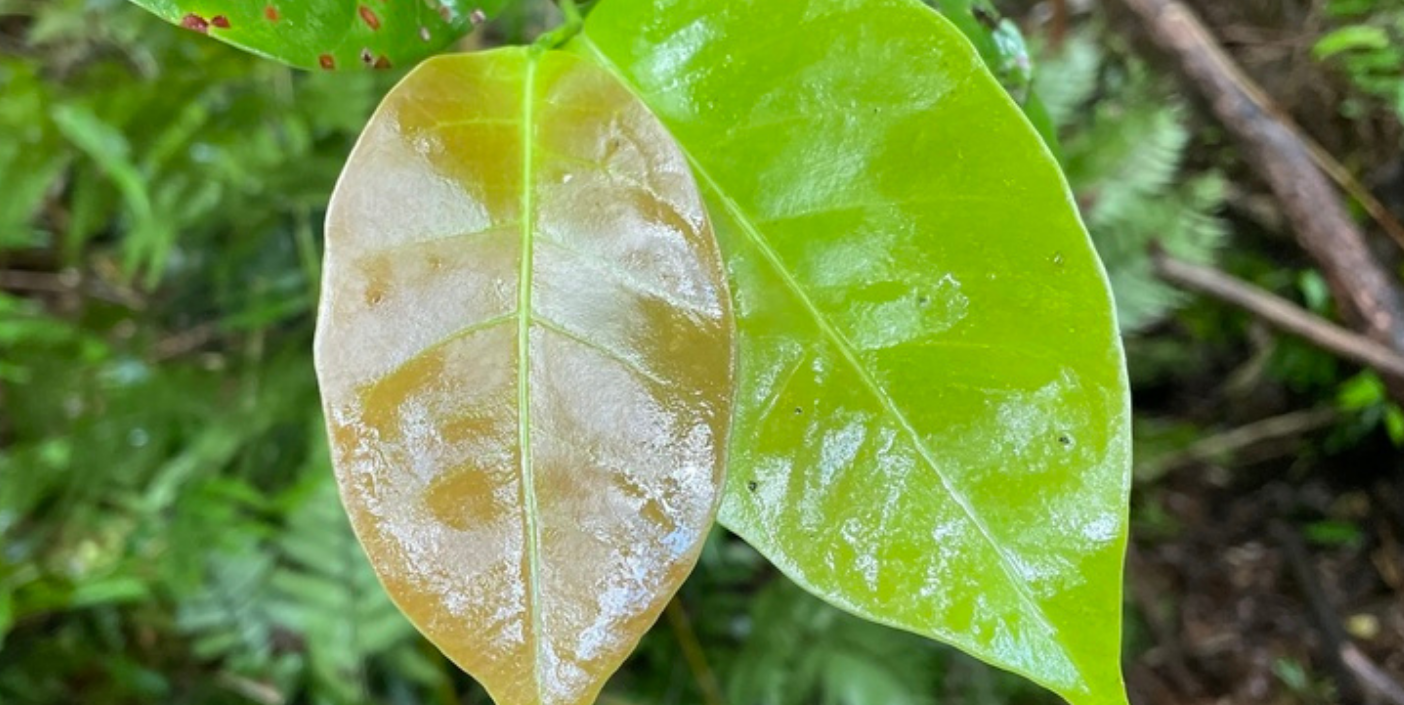
I first started using iNaturalist on a personal level, joining last year’s Project Stay Planted and discovering how great it is to be able to easily identify any plant that I come across (even those of us in the profession can’t automatically identify every plant we encounter). Using iNaturalist made me slow down, look around, and aspire to learn about all of the species around me. Hikes turned into strolls, eyes glued to the ground. Shortly after that project began, the Garden and some of its partners launched a new conservation endeavor, and I began using iNaturalist on a professional level. That’s when my understanding of its potential and possibilities grew. I realized how conservationists around the world are using everyone’s observations to help determine if a plant species is threatened. My collaborators and I began doing the same.
Our project is known as “Red Listing” Caribbean plant species. Let me explain. In 1964, The International Union for the Conservation of Nature (IUCN) launched the IUCN Red List. It is a database of “conservation assessments,” a type of scientific analysis determining a species’ risk of extinction. The Red List describes itself as “the world’s most comprehensive information source on the global conservation status” of plants, animals, and fungi. We are working with colleagues in the Caribbean, our floristically similar neighbor and a Biodiversity Hotspot, to discover which plant species in our region may be on their way to becoming extinct.
There is a set process that the IUCN created to figure out a species’ extinction risk. I, and others around the world, have come to use iNaturalist as an irreplaceable part of that process. The core of a Red List assessment is “occurrence records,” evidence that a species was seen in a certain place at a certain time. For plants, most of these records are herbarium sheets, dried plants pressed on sheets of paper, that have been digitized and shared online. However, a lot of these specimens are very old. This poses a problem because is hard to know for sure if a plant that was at a specific place in the early 1900s, or even the 1990s, is still there. iNaturalist observations are often the most recent data available for a species, making them an invaluable part of occurrence records.
Take the species Coccoloba pyrifolia, a plant that exists solely on the main island of Puerto Rico. The last preserved specimen we could find online was from 2001. A lot could have happened to those plant populations in 20 years, from losing habitat to urban and agricultural development to succumbing to hurricanes. So, we turned to iNaturalist, where we found four observations since 2016. We now know that the species has been seen in the last five years and in which localities it exists. Those iNaturalist observations will help us determine C. pyrifolia’s status in the wild.
Red Listing is a crucial first step in plant conservation. It helps us to prioritize which species we need to conserve through preserving their seeds, growing them in places like botanical gardens, using them in restoration projects, or working with local governments to protect the land on which they grow. iNaturalist is a powerful assistant, bringing recent observations of plants into the assessment process. Through sharing our pictures and knowledge, we can provide data to conservationists all around the world, and we can all take part in saving plants.

Check out Steve’s observation here.
 About the Author
About the Author
Carly Roland is a Conservation Associate at Naples Botanical Garden. She loves continually learning about plants and the ways in which they can help us create a better world. She also loves the beauty of plants and feels lucky to work at a garden that celebrates both the knowledge and beauty of the plant kingdom.


